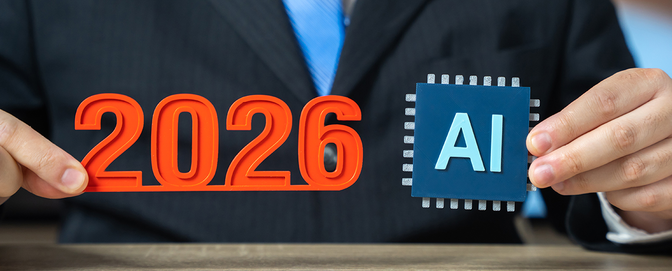
Why the traditional automotive buying experience is running on fumes

Across every industry, user experience emerges as a focal point of business strategy. Big tech’s emphasis on optimization, efficiency, and customer-centricity has heightened the expectations of today’s car buyers. That’s why the traditional automotive buying experience is on the chopping block.
As standards improve, consumer patience for subpar experiences and time-consuming tasks shrinks. According to a recent study, 99% of potential automotive buyers begin their journey expecting to feel frustrated. Consumers are tired of the tedium. They’re ready for the car buying process to join the digital age.
Changes coming to the automotive buying experience
When the pandemic shook the world, the automotive industry was no exception. Local dealerships saw record-high profits due to the hobbled supply chain, and social distancing created a greater emphasis on online sales. Automotive manufacturers fanned the flames of innovation for the automotive buying experience as they devoted more attention to online purchases.
With the global online car buying market forecast to grow by $214 million in 5 years—the days of dealership dallying may come to a close. Companies like GM are focused on shopping, purchasing, and financing experiences that take place entirely online. Meanwhile, Ford’s CEO is pushing for an end-to-end online vehicle buying experience and even a direct-to-consumer model.
Another force of change is the growing popularity of electric vehicles (EVs). Major companies are going electric, with companies like Volvo planning to phase out all gas-powered cars by 2030. More EVs mean more opportunities for digital experiences. EVs have fewer parts and simpler designs that limit customization, cutting down on decision fatigue for online shoppers.
The automotive buying experience for used vehicles
Much of the forecasted growth in online car buying will occur in the used vehicle sector. The demand for used vehicles is increasing, and buyers prefer purchasing online. In emerging economies, in-person transactions are still preferred due to the relative size of the investment for individuals. The bulk of market growth—46% of it—will come from North America, where greater spending power and digitization of the automotive buying experience have been normalized.
Although the trend toward digitization is clear for used car buying, success is far from guaranteed for new players in the game. Most notably, CARVANA, the tech-based golden child of online car buying, saw its stock fall by an almost-unfathomable 98% in 2022 after shrinking used car prices killed a meteoric rise. The impact of their approach, however, won’t be forgotten. An end-to-end online purchasing experience, nationwide inventory selection, 7-day money-back guarantees, and easy trade-ins drew notable consumer appreciation and are sure to have ripple effects. Carvana was one of the four fastest companies in history to make the Fortune 500 and placed 2nd behind Ford in the Forbes most consumer-centric companies list in 2022, affirming the indisputable value of a user-centric emphasis in the automotive buying experience.
Another Silicon Valley company, Shift Technologies, has entered the fray as an online marketplace for buying and selling used cars. Their business model centers on relieving the pain points of peer-to-peer sales and purchases. Originally acting as an intermediary that bought and sold used cars via consignment, Shift now purchases cars outright and facilitates financing, inspections, DMV interactions, repairs, and pricing.
The automotive buying experience for new vehicles
It’s impossible to talk about the car-buying experience without looking at the symbol of the automotive revolution: Tesla. Now considered the most valuable automotive brand in the world, Tesla operates like no other car company before it. That’s because the brand is so tech-centric. Some argue it isn’t a car brand at all. Elon Musk refers to Tesla as a tech company, crediting how central the user experience is to the product.
Because of the background of Tesla’s founders, the entire brand was built on modern digital product design and engineering principles. Scrapping the traditional dealer model, Tesla is direct-to-consumer, meaning they have complete control over vehicle presentation and information about their products.
When it comes time to buy, customers can digitally design a car in-store or customize and buy remotely on Tesla’s website. Price is always non-negotiable, which reduces customers' anxiety about the deal. Once designed and ordered, Tesla’s delivery team guides the customer through the payment process. All the documents are signed electronically, and buyers can pick up the new vehicle at the nearest Tesla store or have it delivered wherever they want.
In the traditional automotive buying experience, this would be the end of the experience. With Tesla, it’s just the beginning. Thanks to its technology backbone, Tesla offers free at-home repairs and wireless software updates, something no other car company can offer. When service center repairs are required, they’re completed much faster than in typical repair shops due to a superior employee experience and management system.
This is a new level of end-to-end care never seen in the automotive buying experience. Tesla understands the value of a lifetime customer, and they have intentionally designed their workflows to address the pain points of car ownership at every opportunity. It’s a seamless experience that runs down to piloting the vehicle. Drivers have features like voice activation controls, advanced monitoring of surrounding vehicles, customizable drive settings, and more. Because the vehicles run on an operating system, the experience is iterable and constantly improving with every update. This attention to detail has resulted in an army of Tesla loyalists. 91% of customers cite the overall user experience as a reason to buy another Tesla.
Going beyond the automotive buying experience
Traditionally, manufacturers and dealerships had two dials to turn regarding customer retention: vehicle characteristics and price. Today, however, digital integration has completely opened up the number of potential consumer touchpoints. This creates opportunities for car brands to become more integrated into the lives of their customers. Already, automakers are investing in innovations like AR/VR tools so prospects can see what the car might look like in their garage.
See how Eccentric Engine develops 3D technology to improve the car buying experience in India and beyond.

The automotive buying experience will continue to shift toward user-centric experience models with a goal of lifetime customer retention. By looking at every touchpoint, from awareness and purchase to ownership and maintenance, car makers can create experiences that cater to user needs and keep their brand in the driver’s everyday life.
Ultimately, the online automotive buying experience represents the first step in car manufacturers gaining a deeper understanding of their users. Buyer data can be cross-referenced with other data when the buying process occurs online. Sellers can leverage this data to improve the experience because each online decision creates a clearer picture of the person behind the steering wheel.
Auto companies use the insight gained to inform decisions on everything from branding and messaging to vehicle design and in-car features. As data gathering improves, so too will customer experience. This will lead to less time spent searching for cars and faster online purchasing processes. It’s an existing reality that will only continue to accelerate.
Staying ahead in the automotive industry
The ability to create intuitive digital experiences will come down to the line of communication between the brand and the customer. To work iteratively, enterprise research and design teams must constantly converse with their users, buyers, and audiences.
On an operational level, companies with the most effective data-gathering tools will be best poised for adaptation and innovation. Quickly gathering consumer feedback and building from a place of human empathy will be the key to success for scrappy startups and a lifeline for global automotive brands.
Mainstay automotive buying websites CarMax and AutoTrader stay ahead of the curve by integrating user testing for automotive into multiple arms of their business, including website design, prototyping, mobile apps, corporate strategy, TV commercials, and more.
By making user testing a central part of their iterative process, organizations uncover new product ideas and, most importantly, give their users a seat at the table with decision-makers in charge of the automotive buying experience.
Having fast and easy access to customer feedback helps executive teams make faster choices. As testing becomes second nature, organizations can let go of their assumptions and find evidence-based solutions through constant customer feedback. This allows them to create unshakeable customer-centric processes and stay at the cutting edge of the automotive buying experience in the coming years.

UX resource collection
Explore UX best practices, expert advice, user research templates, and more.





